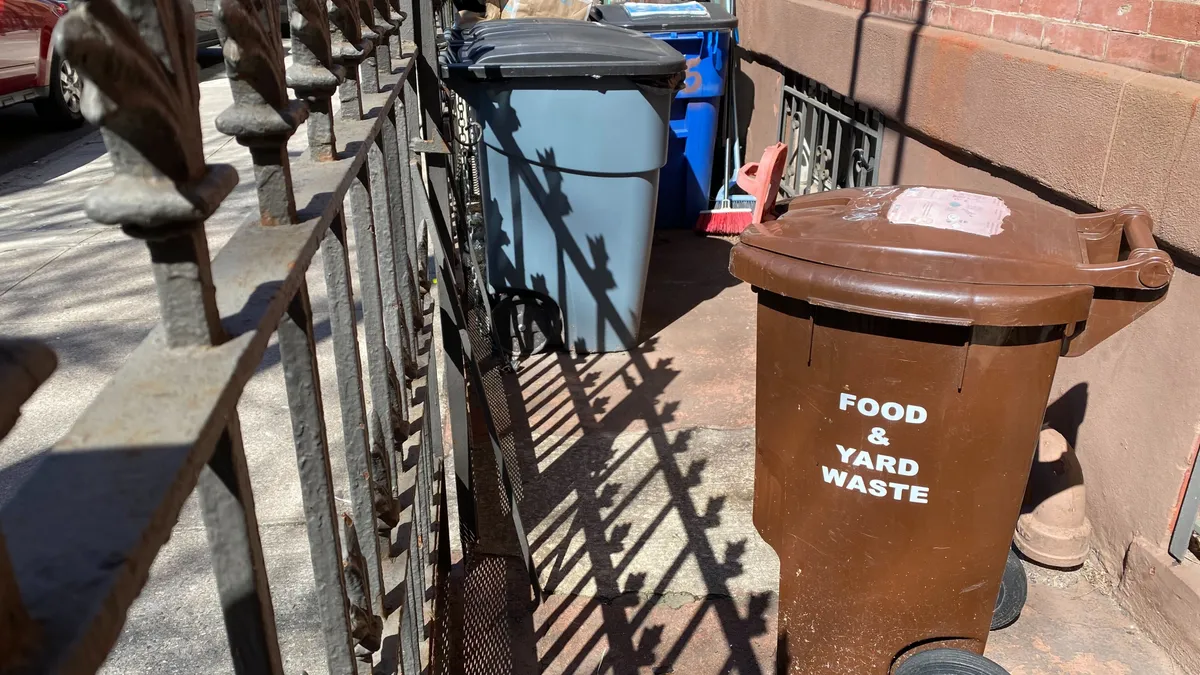The National Waste & Recycling Association (NWRA), along with four companies and two individuals, has filed a lawsuit challenging a recently signed New York law intended to reduce transfer station capacity in the city.
The suit was filed in New York Supreme Court against the City of New York, Mayor Bill de Blasio, the New York City Council, the Department of Sanitation and Commissioner Kathryn Garcia. It alleges violations of state and local regulation, claims that city estimates of remaining slack capacity and potential job loss are inaccurate, outlines potential financial hardship, and challenges the law's intentions on multiple points.
In a statement, NWRA's Northeast Regional Manager Steve Changaris said the plaintiffs "do not take pleasure" in this move.
"Our member companies and this association have worked closely with city officials for decades to efficiently manage solid waste and keep New York City clean and healthy and we worked to avoid this litigation. Unfortunately, the City Council and mayor have unfairly targeted our transfer stations for volume reductions that will harm our customers, our employees, our businesses, and the city.”
DSNY deferred to the city's Law Department for comment.
"This important law was implemented after a thorough analysis to bring relief to communities. We’ll review the suit," wrote Director of Public Affairs Nicholas Paolucci via email.
He also pointed to de Blasio's statement at the August bill signing, which described the law as "creating a more equitable city by shifting the burden away from those communities, and protecting other neighborhoods from facing this inequity in the future" as further affirmation of the city's position.
Local Law 152, which takes effect in 2019, could reduce capacity by 33-50% at select sites in three boroughs. The July passage of its precursor, Intro. 157-C, came after years of failed attempts and was spurred in part by political momentum around broader commercial waste industry reform. The law's stated intention is to reduce activity in three areas of the Bronx, Brooklyn and Queens that have high concentrations of transfer station activity.
Council Member Antonio Reynoso — sanitation committee chair and the bill's primary sponsor — has long pushed for this "waste equity" bill in the name of environmental justice. He was critical of the suit.
“I am confident that LL 152, which caps the permitted capacity of waste transfer stations throughout Brooklyn, Queens, and the Bronx, will be upheld by the courts,” said Reynoso in a statement, going on to tout "widespread support" for the bill this summer. “By capping permitted capacity of waste transfer stations in overburdened communities, this law delivers environmental justice to historically disenfranchised communities and sets a historic precedent for the fair share distribution of burdensome facilities throughout our city."
A joint statement from the coalition that backed this bill — New York Lawyers for the Public Interest, the New York City Environmental Justice Alliance, Natural Resources Defense Council and Teamsters Joint Council 16 — also dismissed the suit's claims.
"This industry lawsuit was as predictable as an asthma attack in the South Bronx — and is business as usual from an industry that is happier spending money on high-priced legal challenges and lobbyists than on paying its workers decent wages or investing in safer, greener facilities. Under the waste equity law, there are now no more expendable people or communities. Hopefully, it is the first of many long overdue reforms for a dangerous industry that exploits both New York City workers and neighborhoods."
In the lead-up to its passage, backers of this law pointed to compromises around previous capacity reduction targets and maintained that negative effects would be minimal per the city's analysis. The suit challenges those findings on multiple points, including underestimation of remaining slack capacity as well as potential job loss, and claims council members had little if any time to read the bill before voting. The city's 144-page environmental assessment statement (EAS) was released just before the initial committee vote took place.
Both points will be key if this lawsuit proceeds, though the employment statistic appears particularly important. According to the suit, the potential loss of 100 jobs could trigger a more in-depth environmental review process. The city's estimates were below that threshold. The question of whether this law dovetails closely enough with DSNY's proposed commercial waste zone plan, which will require a full environmental review, has also been raised in the suit as a new factor.
This comes down, in many ways, to what constitutes financial viability and necessary slack capacity. The city's EAS does recognize negative financial impact on all four plaintiff companies, though those effects are described as manageable. Metropolitan Transfer (which shares ownership with the beleaguered Sanitation Salvage) and Hi-Tech Resource Recovery (a subsidiary of Mr. T Carting) were listed among the most affected putrescible sites. City Recycling and Empire Recycling were cited among non-putrescible sites expected to see similar effects.
As local companies continue to raise concerns over the financial effects of other city regulations, this suit will likely play into the ongoing debate around profit and progress that is at the heart of virtually every New York commercial waste discussion today.























